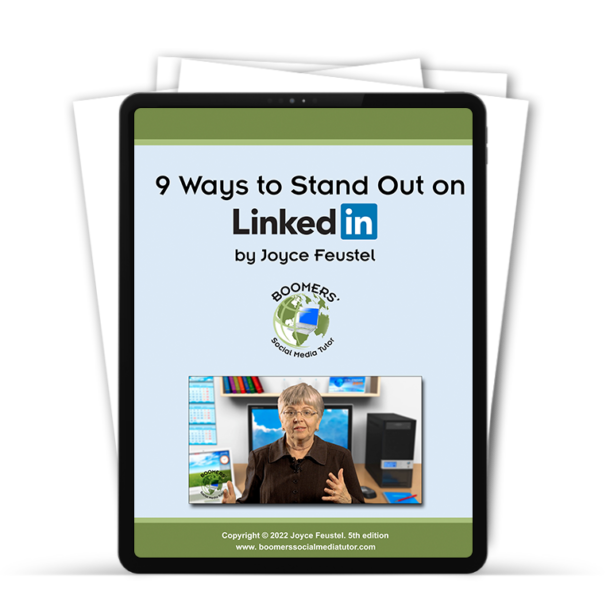Are you looking for tips for your LinkedIn Experience section?
I challenge you to make your LinkedIn experience section more engaging. Too often, this section is simply a rehash of your professional resume. Make it more like a resume on steroids!
Consider jazzing up the section by using some emojis to replace the bullets in a bulleted list within the position descriptions.
Other general tips:
- Highlight key points: focus on your most significant achievements and responsibilities that are relevant to your target audience.
- Use strong, active verbs: doing so makes your descriptions more impactful and easier to scan.
- Keep sentences short and punchy: avoid long, complex sentences.
- For greater readability on mobile devices, limit the position description to 600 characters or less. You are allowed up to 2,000 characters.
In particular, if you are a business owner, I challenge you to create a separate position for each of your company’s services. Having more than one position allows you to elaborate a bit more on each of them. In addition, for each position you list, you can add more testimonials and more media, as described below.
For example, the positions I list in my Experience section are:
- Linked-In Focused Social Media Coach
- LinkedIn Profile Workshop Host | Small Team Trainer
- LinkedIn Trainer and Presenter
- Founder | Organizer | Simplify Your Social Media Meetup Group
- Podcast Guest
Check out the my Experience section to see how I differentiate among my services.
5 More Ways to Expand Your Linked Experience Section
- Expand on your current position titles. Typically, people use the exact language from their resume or from their website About section when creating a position title. In a LinkedIn position title, consider adding words or phrases that more descriptively depict what you do (or did) in that position. You have up to 100 characters for the title field.
- List your leadership roles in volunteer organizations as positions in the experience section. Doing so has many benefits. You give more visibility to the organization than if you only listed it in the volunteering section. You can showcase skills and accomplishments you may not have done in a paid capacity. People familiar with your work in these roles can write you a LinkedIn recommendation for what you did.
- Associate relevant skills with at least your current and recent positions. The easiest way to do this is to scroll down to the Skills section. Click on the pencil to the right of the word Skills. Then click on the pencil to the right of the skills you want to associate with one or more positions in the experience section. Check the box to the left of the positions with which you want to associate that skill. Did you know that you can add up to 100 skills to your LinkedIn profile? For each section, there’s no limit on the number of skills to add, those it’s probably better to have no more than around 30 skills.
- Add one or two testimonials to current and recent position descriptions. Add excerpts of your best recommendations to the end of a position description. Doing so is a great way to show how much your clients and others appreciate you. Additionally, you are giving them some great PR by including them in this part of your profile. You can also include a testimonial from someone in this section, even if the two of you aren’t connected on LinkedIn. Consider adding one or two of your Google Reviews to your position description with snippets from your recommendations.
- Include media at the end of the position listing. When you click on “add media” toward the bottom of your position, you can select “add a link” or “add media.” Click on “add a link” to add a link. Ideally, there would be a visual that is associated with this link. Click on “add media” to add a photo, document (e.g., a PDF), or a PowerPoint. Having media in your positions makes your experience section more visually engaging.
How Far Back Should You Go in Your Experience Section?
Since most of my clients are 50 and older, I often get this question. Job seekers, in particular, are concerned about age discrimination. Also, the general rule of thumb for a job seeker’s resume is only to go back about 10-15 years. This same rule applies to their experience section of LinkedIn.
My answer to the question “How far back should you go in your experience section?” is, “It depends.” In general, you may choose to have your experience section mirror your resume and limit yourself to that time frame.
However, if you held a position (paid or volunteer) more than 15 years ago that relates directly to the job you are seeking, consider adding it to your experience section. Doing that provides more key words and context for why you are pursuing that type of job.
In my opinion, business owners have more latitude regarding how far back to list positions in this section.
About Joyce
Joyce Feustel helps people, especially those age 55 and up, become more effective social media users, especially LinkedIn and Facebook. She works with business owners, business development professionals, business consultants, job seekers, and others. Find her at www.boomerssocialmediatutor.com.




Leave A Comment